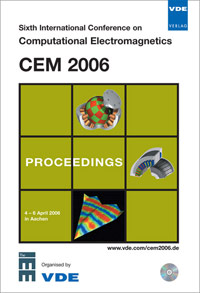Computational Technique for Modelling of Frequency Converters and Analysis of Generated Waveforms
Konferenz: CEM 2006 - 6th International Conference on Computational Electromagnetics
04.04.2006 - 06.04.2006 in Aachen, Germany
Tagungsband: CEM 2006
Seiten: 2Sprache: EnglischTyp: PDF
Persönliche VDE-Mitglieder erhalten auf diesen Artikel 10% Rabatt
Autoren:
Eribe, Juan Sagarduy Ochoa de; Moses, Anthony J.; Anayi, Fatih J. (Wolfson Centre for Magnetics. Cardiff School of Engineering, Queen's Buildings - The Parade, Cardiff CF24 3AA, United Kingdom)
Clare, Jon; Wheeler, Patrick W. (Power Electronics and Machines Control Group, School of Electrical and Electronic Engineering, The University of Nottingham, Nottingham NG7 2RD, UK)
Inhalt:
Iron losses due to flux harmonics in stator cores of Pulse-Width-Modulation [PWM] inverter-fed induction motors have been highlighted recently as having a major effect on system efficiency. A new generation of direct ac-ac matrix converters offer important advantages over classical frequency converters such as absence of bulky and temperature sensitive dc-link, adjustment of power factor and nearly sinusoidal input/output current. The method proposed here, using S-functions in a Matlab-Simulink environment, and Day Post Processor in Ansoft Simplorer, aims for a thorough analysis of output voltage waveforms of PWM inverters and 3x3 matrix converters under Space Vector Modulation [SVM]. After a brief introduction to frequency converters, the paper describes the new method and presents voltage waveforms along with analytical results of their harmonic characteristics. It is believed that as well as high processing speed and limited computational effort, this technique will provide the academic and research community with a better understanding of waveform characteristics of novel and classical ac-ac converters.


